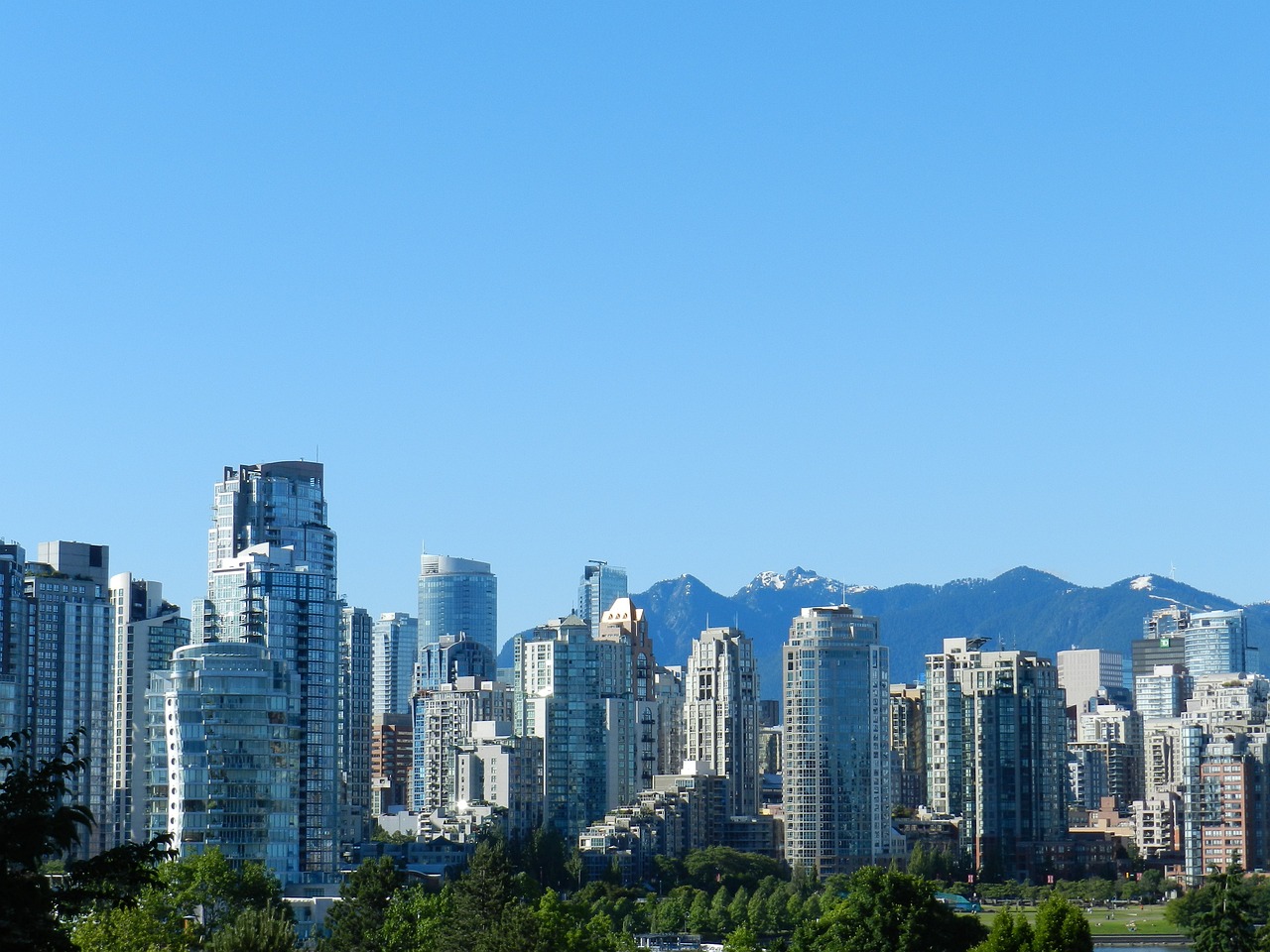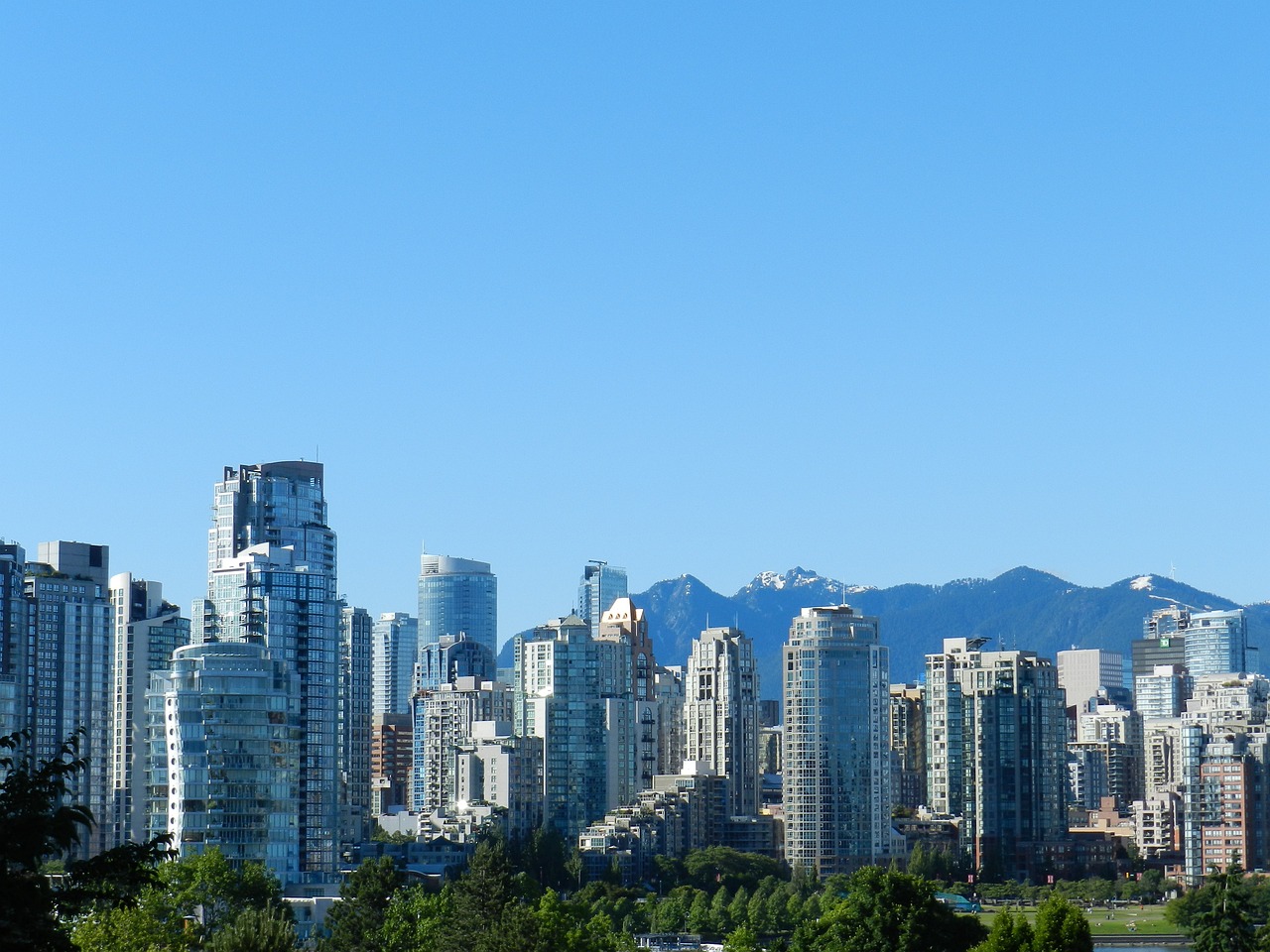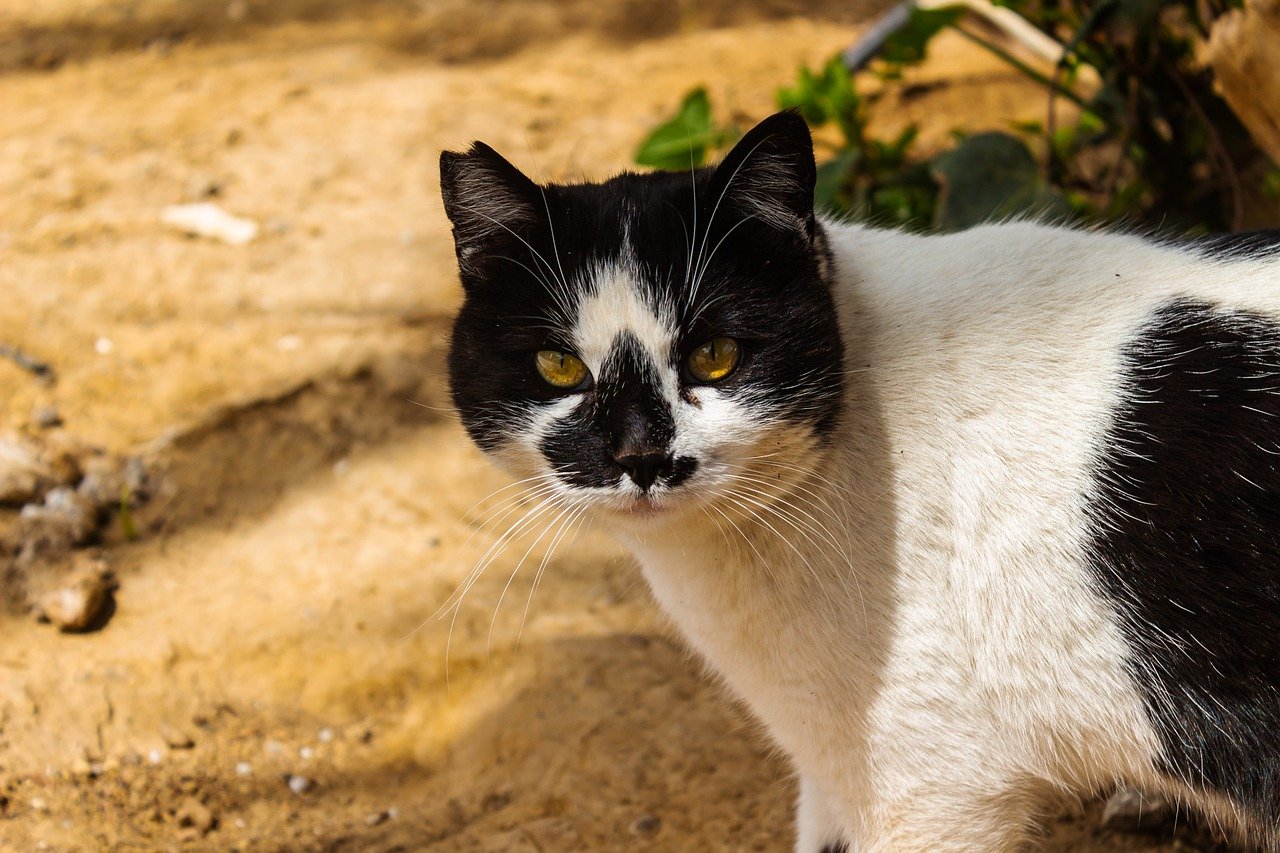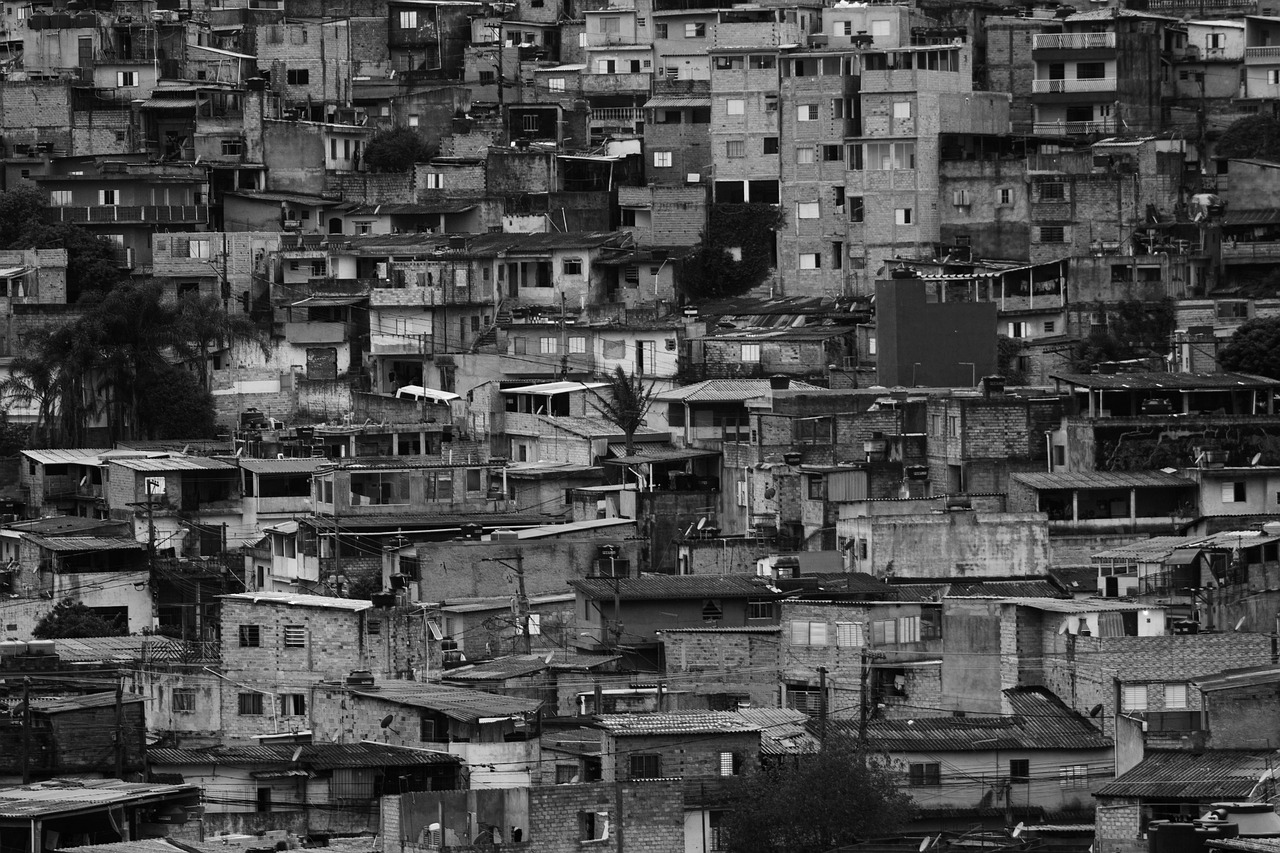Overpopulation and Biodiversity - Is There a Correlation?
Overpopulation is a pressing issue that has been garnering attention from scientists, environmentalists, and policymakers alike. As the global population continues to soar, we are faced with a critical question: how does this rapid growth affect biodiversity? The intricate relationship between human population dynamics and the delicate balance of ecosystems is complex, yet essential to understand. This article delves into the significant impacts of overpopulation on biodiversity, exploring how our expanding numbers are not just a human concern but a profound environmental challenge.
When we think of overpopulation, we often picture crowded cities and strained resources. However, the implications extend far beyond our immediate surroundings. As more people inhabit the Earth, the demand for land, water, and food escalates. This escalation often leads to habitat destruction, pollution, and the depletion of natural resources, all of which pose serious threats to the myriad of species that share our planet. The loss of biodiversity is not just an environmental issue; it is a crucial factor in maintaining the health of ecosystems that support all life forms, including our own.
To illustrate the gravity of the situation, consider this: according to the United Nations, the world population is expected to reach nearly 10 billion by 2050. This surge translates into increased urbanization, agricultural expansion, and resource extraction, all of which contribute to the degradation of natural habitats. As we encroach upon these ecosystems, we not only threaten the survival of countless species but also undermine the services that these ecosystems provide—services like clean air, water purification, and climate regulation.
In essence, the correlation between overpopulation and biodiversity loss is unmistakable. Our growing numbers lead to a cascade of environmental changes that disrupt the delicate balance of life on Earth. This article will explore the various facets of this relationship, highlighting the urgent need for sustainable practices that can mitigate the adverse effects of overpopulation on our planet's biodiversity.

The Impact of Overpopulation on Ecosystems
Overpopulation is not just a number; it’s a phenomenon that reverberates through our ecosystems, creating ripples of change that can lead to devastating consequences. As the human population swells, the natural world bears the brunt of our increasing demands. Think about it: more people means more homes, more cars, more waste, and more consumption. This unrelenting pressure leads to significant habitat destruction, pollution, and resource depletion, all of which severely impact the delicate balance of ecosystems.
To understand this impact, we can break it down into three major areas:
- Habitat Destruction: As cities expand and agricultural land is cleared, countless species lose their homes. Forests, wetlands, and grasslands are transformed into urban jungles, leaving wildlife with nowhere to go.
- Pollution: Increased human activity leads to higher levels of pollution in our air, rivers, and oceans. This pollution poisons habitats and can decimate local wildlife populations.
- Resource Depletion: The more we consume, the faster we deplete the earth’s natural resources, putting additional strain on ecosystems that are already struggling to cope.
Let’s dive deeper into how these factors contribute to biodiversity loss. Habitat destruction is perhaps the most visible impact of overpopulation. As we pave over natural landscapes to make way for housing and infrastructure, we not only displace species but also fragment their habitats. This fragmentation can lead to isolated populations that struggle to survive. For instance, the expansion of urban areas often cuts through migration routes, making it difficult for animals to find food and mates.
Moreover, pollution from industrial activities and urban runoff introduces harmful substances into the environment. Chemicals, plastics, and waste materials can poison ecosystems, leading to declines in species that cannot adapt to these changes. For example, aquatic life is particularly vulnerable, as pollutants can disrupt reproductive systems and lead to mass die-offs in fish populations. This, in turn, affects the entire food chain, illustrating how interconnected our ecosystems truly are.
Resource depletion is another pressing issue. As we extract resources at an unsustainable rate to support our growing population, we threaten the very foundations of our ecosystems. Overfishing, deforestation, and unsustainable agriculture practices lead to a decline in biodiversity. For instance, when forests are cut down to make way for new farmland, not only are the trees lost, but so are the myriad species that depend on those trees for survival.
In summary, the impact of overpopulation on ecosystems is profound and multifaceted. It’s a complex web of destruction that not only threatens individual species but also the health of our planet as a whole. As we continue to grow, we must ask ourselves: how can we balance our needs with the needs of the environment? The answer lies in understanding the interconnectedness of all living things and recognizing that our survival is inextricably linked to the health of our ecosystems.

Species Extinction Rates
The rapid increase in human population has a striking correlation with alarming species extinction rates. As our numbers grow, the pressure on natural ecosystems intensifies, leading to a cascade of consequences that threaten the very fabric of biodiversity. According to the World Wildlife Fund, we are currently witnessing a rate of extinction that is up to 1,000 times higher than the natural background rate. This staggering statistic raises a critical question: how did we get here?
One of the primary factors driving these extinction rates is habitat loss. As urban areas expand to accommodate our ever-growing population, we encroach upon the natural habitats of countless species. This not only reduces the available space for wildlife but also fragments ecosystems, making it difficult for species to thrive. For instance, the construction of roads and buildings often cuts through forests and wetlands, isolating animal populations and disrupting their migratory patterns. The consequences are dire: species that once roamed vast landscapes are now confined to shrinking patches of habitat, leading to inbreeding and a decline in genetic diversity.
In addition to habitat destruction, human activity has led to increased pollution levels. From agricultural runoff to industrial waste, the pollutants we release into the environment have devastating effects on both flora and fauna. Waterways that were once teeming with life are now contaminated, pushing aquatic species to the brink of extinction. For example, the decline of amphibian populations worldwide is often linked to habitat degradation and pollution, showcasing how interconnected these issues are.
Moreover, climate change, driven by human activities, exacerbates the situation. Rising temperatures and shifting weather patterns disrupt ecosystems, making it increasingly difficult for species to adapt. The International Union for Conservation of Nature (IUCN) has reported that climate change is a significant threat to nearly one-third of all species assessed, emphasizing the urgency of addressing this issue.
To illustrate the gravity of the situation, consider the following table that highlights some key statistics regarding species extinction:
| Factor | Impact on Species | Estimated Extinction Rate |
|---|---|---|
| Habitat Loss | Destruction of natural habitats | Up to 70% of species at risk |
| Pollution | Contamination of ecosystems | Approximately 30% of species affected |
| Climate Change | Altered habitats and migration patterns | 1 in 3 species at risk |
In summary, the correlation between human population growth and species extinction rates is undeniable. As we continue to expand our footprint on this planet, the myriad of pressures we exert on ecosystems becomes increasingly clear. The question remains: how can we reverse this trend and protect the biodiversity that sustains us? It is imperative that we recognize our role in this crisis and take action to mitigate our impact, ensuring a future where both humans and wildlife can coexist harmoniously.
- What is causing the high extinction rates? The main causes include habitat loss, pollution, and climate change, all exacerbated by human population growth.
- How does urbanization affect wildlife? Urbanization leads to habitat destruction and fragmentation, making it difficult for species to survive and reproduce.
- What can be done to prevent extinction? Implementing conservation strategies, promoting sustainable practices, and engaging communities in wildlife protection are essential steps.

Habitat Destruction
Habitat destruction is one of the most pressing issues linked to overpopulation. As cities expand and human settlements grow, natural environments are often sacrificed on the altar of development. Imagine a vibrant forest teeming with life, suddenly replaced by concrete jungles and sprawling suburbs. This transformation not only diminishes the beauty of our planet but also leads to a sharp decline in biodiversity. When habitats are destroyed, the delicate balance of ecosystems is disrupted, and countless species are pushed to the brink of extinction.
One of the most alarming aspects of habitat destruction is its rapid pace. According to recent studies, it is estimated that over 50% of the world's natural habitats have already been altered or destroyed. This statistic is particularly concerning when you consider the following factors contributing to habitat loss:
- Urbanization: As populations swell, urban areas expand into previously untouched landscapes, forcing wildlife into smaller and smaller spaces.
- Agricultural Expansion: The need for more food leads to the conversion of forests and wetlands into farmland, which not only destroys habitats but also alters the natural water cycle.
- Infrastructure Development: Roads, highways, and buildings fragment habitats, isolating species and making it difficult for them to find mates or food.
Consider the plight of the orangutan, whose habitat in Southeast Asia is being decimated for palm oil plantations. As their forests vanish, these intelligent creatures are left with nowhere to go, leading to population declines that are heartbreaking to witness. The destruction of their habitat not only threatens their survival but also disrupts the entire ecosystem they inhabit, demonstrating how interconnected life on Earth truly is.
Moreover, habitat destruction often leads to a phenomenon known as "edge effects," where the edges of fragmented habitats experience different environmental conditions than the interior. This can result in increased predation, competition, and exposure to invasive species, further endangering the native wildlife. The consequences are dire: as species struggle to adapt to their shrinking environments, many will simply not survive.
To illustrate the impact of habitat destruction, consider the following table that highlights some critical statistics:
| Type of Habitat | Percentage Lost | Species Affected |
|---|---|---|
| Forests | 50% | More than 80% of terrestrial species |
| Wetlands | 54% | Numerous amphibian and bird species |
| Coral Reefs | 30% | Over 25% of marine species |
As we reflect on the stark realities of habitat destruction, it becomes clear that the choices we make today will shape the future of our planet. We must prioritize conservation efforts and sustainable practices to protect these vital ecosystems. The question remains: how much longer can we afford to ignore the consequences of our actions? The time for change is now, and it starts with acknowledging the critical link between overpopulation and habitat destruction.

Urbanization Effects
Urbanization is like a double-edged sword; it brings progress and development, but at a cost that often goes unnoticed until it's too late. As cities expand and human populations swell, the natural world bears the brunt of this growth. The encroachment of urban areas into wildlife habitats leads to a cascade of effects that can be detrimental to biodiversity. Imagine a thriving forest suddenly giving way to a sprawling metropolis—this is not just a scene from a movie, but a reality that many ecosystems face today.
One of the most immediate impacts of urbanization is habitat fragmentation. As roads, buildings, and other infrastructures are constructed, they divide previously continuous habitats into smaller, isolated patches. This fragmentation can severely limit the movement of species, making it difficult for them to find mates, food, and shelter. For instance, large mammals like bears and wolves require vast territories to thrive, but urban sprawl can confine them to small areas, leading to inbreeding and population decline.
Furthermore, urbanization often introduces various stressors that can be harmful to wildlife. Increased light pollution disrupts the natural behaviors of nocturnal animals, while noise pollution can interfere with communication among species. The introduction of invasive species, often a byproduct of human activity, can also outcompete native species for resources, further tipping the scales against biodiversity. The following table summarizes some of the key effects of urbanization on biodiversity:
| Effect | Description |
|---|---|
| Habitat Fragmentation | Divides ecosystems, making it difficult for species to migrate and reproduce. |
| Pollution | Increases levels of air, water, and soil pollution, harming wildlife. |
| Invasive Species | Introduces non-native species that compete with local flora and fauna. |
| Resource Competition | Increased demand for land and resources leads to overexploitation of local ecosystems. |
Moreover, urban environments can create a 'heat island' effect, where urban areas become significantly warmer than their rural surroundings. This increase in temperature can alter local ecosystems, affecting everything from plant growth patterns to animal behavior. For example, some species may find it challenging to adapt to the increased heat, leading to shifts in population dynamics and even local extinctions.
On a more positive note, urbanization also opens up opportunities for conservation efforts. Cities can become hubs for biodiversity if planned thoughtfully. Green spaces, such as parks and community gardens, can serve as vital refuges for various species. Urban planners and ecologists are increasingly recognizing the importance of integrating nature into city designs, creating 'green corridors' that allow wildlife to navigate urban landscapes more easily. These efforts can help mitigate some of the adverse effects of urbanization while promoting a healthier environment for both humans and wildlife.
In conclusion, the effects of urbanization on biodiversity are profound and multifaceted. While it poses significant challenges, it also presents opportunities for innovative solutions that can benefit both urban dwellers and the natural world. As we continue to build and expand our cities, it is crucial to remember that our actions today will shape the ecosystems of tomorrow.
- What is urbanization? Urbanization refers to the increasing population shift from rural to urban areas, resulting in the growth of cities.
- How does urbanization affect wildlife? Urbanization leads to habitat destruction, fragmentation, pollution, and resource competition, all of which can harm wildlife populations.
- Can urban areas support biodiversity? Yes, with careful planning and the integration of green spaces, urban areas can support diverse ecosystems.
- What are green corridors? Green corridors are natural pathways that allow wildlife to move through urban areas, helping to maintain biodiversity.

Deforestation and Land Use
Deforestation, the large-scale removal of forests, is a direct consequence of the ever-increasing human population. As our numbers swell, the demand for land to build homes, farms, and industries skyrockets. This relentless pursuit of space has led to the degradation of vast swathes of forested areas, which are crucial for maintaining biodiversity. When we strip the land of its trees, we not only lose the habitats of countless species but also disrupt the intricate web of life that thrives within these ecosystems.
Imagine a thriving forest as a bustling city, filled with diverse communities of plants and animals, each playing a vital role in the ecosystem. When we cut down trees, it's like tearing down buildings in that city, leaving the inhabitants with nowhere to go. The consequences of deforestation extend beyond the immediate loss of trees; they ripple through the environment, affecting air quality, soil health, and water cycles.
One of the most alarming aspects of deforestation is its impact on species that depend on specific habitats. For instance, when tropical rainforests are cleared for agriculture, species that rely on these unique ecosystems face extinction. The following table illustrates some of the key consequences of deforestation on biodiversity:
| Consequence | Description |
|---|---|
| Habitat Loss | Destruction of natural habitats leads to a decline in species populations. |
| Climate Change | Forests act as carbon sinks; their removal contributes to global warming. |
| Soil Erosion | Without trees, soil becomes vulnerable to erosion, affecting land productivity. |
| Water Cycle Disruption | Forests play a critical role in maintaining local and global water cycles. |
Moreover, the methods used in land conversion for agriculture, such as slash-and-burn techniques, further exacerbate the problem. This practice not only destroys the forest but also creates a cycle of degradation that can take decades to reverse. The soil, stripped of its nutrients, becomes less fertile, leading to the need for chemical fertilizers that can further harm local wildlife.
As urban areas expand, they often encroach on previously untouched natural spaces. This urbanization forces wildlife into smaller and smaller areas, leading to increased competition for resources. The result? A downward spiral for many species that struggle to survive in fragmented habitats. It’s like trying to fit a square peg into a round hole; the fit just isn’t right, and something has to give.
In conclusion, the relationship between deforestation and land use is a complex and pressing issue that cannot be overlooked. As we continue to expand our footprint on this planet, we must recognize the profound impact our choices have on biodiversity. The challenge ahead lies in finding sustainable ways to meet our needs without sacrificing the very ecosystems that support life on Earth.

Pollution and Biodiversity
As the human population continues to surge, pollution has become an insidious threat to biodiversity. The relationship between pollution and the decline of various species is complex yet alarming. Pollution manifests in numerous forms, including air, water, and soil contamination, each of which has devastating effects on ecosystems. Have you ever considered how the smoke from a factory or the waste dumped into rivers can ripple through the food chain, ultimately affecting the very air we breathe and the water we drink?
Air pollution, for instance, is not just a nuisance; it can lead to respiratory problems in humans and animals alike. The emissions from vehicles and industries release harmful particulates and gases, which can cause acid rain. This rain can alter the pH levels of soil and water bodies, making it inhospitable for many species. In fact, studies have shown that increased levels of nitrogen from air pollution can lead to nutrient imbalances in ecosystems, favoring certain plant species over others and disrupting the delicate balance of biodiversity.
Water pollution, on the other hand, is equally catastrophic. Contaminants from agricultural runoff, such as pesticides and fertilizers, seep into rivers and lakes, creating dead zones where aquatic life cannot survive. For example, the infamous Gulf of Mexico dead zone, largely a result of nutrient runoff, has led to significant fish kills and a decline in marine biodiversity. The loss of a single species can trigger a cascade of effects, disrupting food webs and altering habitats.
Soil pollution further complicates the scenario. Toxic substances can accumulate in the soil, affecting plant growth and the organisms that rely on those plants for food. Heavy metals like lead and mercury can enter the food chain, posing severe health risks not just to wildlife but also to humans. Imagine consuming a fish that has absorbed these toxins; it’s a grim reminder of how interconnected our ecosystems are.
The impact of pollution on biodiversity can be quantified through various metrics. For instance, a study published in the journal "Nature" highlighted that over 1 million species are currently at risk of extinction, with pollution being one of the key drivers. To illustrate this further, consider the following table that summarizes the major types of pollution and their effects on biodiversity:
| Type of Pollution | Effects on Biodiversity |
|---|---|
| Air Pollution | Acid rain, respiratory diseases in wildlife, nutrient imbalance |
| Water Pollution | Dead zones, decline in fish populations, habitat destruction |
| Soil Pollution | Toxin accumulation, plant growth inhibition, food chain disruption |
To combat these issues, it’s crucial that we adopt a more sustainable approach to our industrial and agricultural practices. Reducing emissions, treating wastewater, and using organic farming methods can significantly lessen our ecological footprint. Moreover, educating communities about the importance of reducing pollution can foster a sense of responsibility towards the environment. After all, protecting biodiversity is not just about saving the cute and cuddly species; it’s about ensuring the health of our planet and, by extension, our own survival.
- What are the main causes of pollution affecting biodiversity? The main causes include industrial emissions, agricultural runoff, waste disposal, and urbanization.
- How does pollution lead to species extinction? Pollution disrupts habitats, reduces food availability, and introduces toxins into the food chain, leading to health issues and population declines.
- What can individuals do to reduce pollution? Individuals can reduce pollution by using public transport, minimizing waste, supporting sustainable products, and advocating for environmental policies.
- Are there any successful examples of reducing pollution? Yes, cities that have implemented stricter emissions regulations and invested in green technologies have seen improvements in air and water quality.

Resource Depletion and Its Consequences
Overpopulation is not just a number; it’s a phenomenon that leads to the relentless consumption of our planet's resources. As the human population skyrockets, so does our demand for essential resources like water, food, and energy. This insatiable thirst for resources can have dire consequences for biodiversity. When we strip the Earth of its natural wealth to satisfy our growing needs, we often overlook the intricate balance of ecosystems that sustain life. Think of it like a game of Jenga; remove too many blocks, and the entire structure collapses.
One of the most glaring consequences of resource depletion is its impact on wildlife. As we exploit natural resources, we encroach on habitats, leading to a decline in various species. For instance, overfishing in oceans has led to a dramatic decrease in fish populations, disrupting marine ecosystems. Similarly, deforestation to make way for agriculture not only reduces tree populations but also threatens countless species that rely on forests for their survival. The ripple effect of these actions can be catastrophic, leading to a loss of biodiversity that takes generations to recover.
Moreover, the depletion of resources often results in a vicious cycle of poverty and environmental degradation. In many developing countries, communities dependent on natural resources for their livelihoods face the harsh reality of scarcity. This scarcity can lead to conflicts over resources, further exacerbating the problem. For example, water scarcity can lead to tensions between agricultural and urban areas, as both sectors compete for limited supplies. The consequences of such conflicts can be devastating, not just for humans but also for the flora and fauna that share these environments.
To truly understand the consequences of resource depletion, we must also consider the long-term effects on ecosystem health. When we overexploit resources, we not only threaten individual species but also the intricate web of life that connects them. Healthy ecosystems provide essential services, such as clean air and water, pollination of crops, and climate regulation. When these systems become unbalanced, the effects can be felt far and wide. For instance, the loss of pollinators due to habitat destruction and pesticide use can have severe implications for global food production.
In summary, the consequences of resource depletion are far-reaching and complex. They not only threaten biodiversity but also jeopardize the very resources we depend on for survival. It’s crucial for us to recognize the interconnectedness of our actions and the health of our planet. By adopting sustainable practices and being mindful of our consumption, we can help mitigate these impacts and work towards a more balanced coexistence with nature.
- What is resource depletion? Resource depletion refers to the consumption of a resource faster than it can be replenished, leading to scarcity.
- How does overpopulation contribute to resource depletion? Overpopulation increases demand for resources such as water, food, and energy, leading to their rapid exhaustion.
- What are the consequences of resource depletion on biodiversity? Resource depletion can lead to habitat destruction, species extinction, and a decline in ecosystem health.
- What can be done to mitigate resource depletion? Implementing sustainable practices, conserving resources, and engaging communities in conservation efforts are essential strategies.

Water Scarcity
As the human population continues to surge, the demand for fresh water grows exponentially, creating a crisis that is both alarming and urgent. Water scarcity isn’t just a problem for arid regions; it’s a global issue that affects billions of people. Imagine a bustling city where the tap runs dry, or a rural community that can’t sustain its crops due to dwindling water supplies. This scenario is becoming increasingly common, and it’s a direct consequence of overpopulation.
Water scarcity can be classified into two main types: physical scarcity and economic scarcity. Physical scarcity occurs when natural water resources are insufficient to meet the demands of a population, while economic scarcity arises when a region lacks the infrastructure or financial means to access clean water. Both types are exacerbated by the growing number of people on the planet, which leads to increased competition for this vital resource.
In many areas, overpopulation leads to a vicious cycle of water depletion. As more people inhabit a region, the demand for water increases, which in turn leads to over-extraction from rivers, lakes, and aquifers. This over-extraction not only diminishes the available water supply but also disrupts local ecosystems. For instance, when water is diverted from rivers for agricultural use, it can result in the drying up of wetlands that serve as crucial habitats for numerous species.
Additionally, the effects of water scarcity ripple through communities, causing not just ecological damage but also social unrest. When people can’t access clean water, they face health risks, which can lead to increased mortality rates, especially among vulnerable populations like children and the elderly. This situation creates a scenario where the struggle for water can lead to conflict, further destabilizing already fragile regions.
To illustrate the severity of water scarcity, consider the following statistics:
| Region | Population Affected | Water Availability (liters per person per day) |
|---|---|---|
| Sub-Saharan Africa | 300 million | 25 |
| Middle East | 60 million | 100 |
| South Asia | 600 million | 150 |
As we can see, regions with high population densities often struggle with significantly lower water availability. This disparity not only highlights the need for sustainable water management practices but also emphasizes the importance of addressing overpopulation as a root cause of water scarcity.
In conclusion, the relationship between overpopulation and water scarcity is undeniable. As we continue to grow in numbers, we must also find innovative and sustainable solutions to ensure that everyone has access to this essential resource. Without a concerted effort to manage our water resources wisely, we risk not only the health of our ecosystems but also the well-being of future generations.
- What are the main causes of water scarcity? Water scarcity is primarily caused by overpopulation, poor water management, climate change, and pollution.
- How does water scarcity affect biodiversity? Water scarcity leads to habitat destruction, reduced water quality, and increased competition for limited resources, all of which threaten biodiversity.
- What can be done to combat water scarcity? Implementing sustainable water management practices, investing in water-saving technologies, and promoting conservation efforts are crucial steps to combat water scarcity.

Food Production and Biodiversity
The relationship between food production and biodiversity is a complex and often troubling one. As the global population continues to surge, the demand for food skyrockets, leading to practices that can significantly harm our planet's rich tapestry of life. When we think about food production, it’s easy to envision lush fields and abundant harvests, but the reality often involves monocultures—the agricultural practice of growing a single crop over a wide area for many consecutive years. While this method can maximize short-term yields, it comes with dire consequences for biodiversity.
Monocultures strip the land of its natural variety, reducing the number of species that can thrive in a given area. This practice not only diminishes the genetic diversity of crops but also makes them more susceptible to pests and diseases. Imagine a world where every apple is the same; if a new pest arrives, it could wipe out the entire crop. The same principle applies to our agricultural systems. When we rely heavily on a few staple crops, we are essentially putting all our eggs in one basket, risking food security and the health of ecosystems.
Moreover, the methods used to support large-scale food production, such as the extensive use of fertilizers and pesticides, can lead to further biodiversity loss. These chemicals often leach into surrounding environments, contaminating soil and waterways, which can be devastating for local wildlife. For instance, aquatic ecosystems suffer when runoff from farms enters rivers and lakes, leading to algal blooms that deplete oxygen levels and kill fish and other aquatic life.
To illustrate the impact of food production on biodiversity, consider the following table that highlights the consequences of agricultural practices:
| Practice | Impact on Biodiversity |
|---|---|
| Monoculture Farming | Reduces species variety, increases vulnerability to pests |
| Pesticide Use | Harms non-target species, disrupts food chains |
| Deforestation for Agriculture | Destroys habitats, leads to species extinction |
| Soil Degradation | Reduces land productivity, affects plant diversity |
To combat these issues, it's essential to adopt more sustainable agricultural practices that prioritize biodiversity. This can include methods like crop rotation, which helps maintain soil health and supports a variety of species. Integrating diverse plant species can also create a more resilient ecosystem, allowing for natural pest control and reducing the need for harmful chemicals.
In conclusion, while the need for food production is undeniable, we must recognize its profound impact on biodiversity. By shifting towards practices that respect and enhance our natural ecosystems, we can work towards a future where food security and biodiversity coexist harmoniously. After all, a healthy planet is the foundation of a sustainable food system, and protecting our biodiversity is not just an environmental concern; it's a necessity for our survival.
- How does food production affect biodiversity? Food production, particularly through monocultures and chemical use, can lead to habitat destruction, reduced species diversity, and increased vulnerability of ecosystems.
- What are sustainable agricultural practices? Sustainable agricultural practices include crop rotation, organic farming, agroforestry, and permaculture, all of which aim to promote biodiversity and reduce environmental impact.
- Why is biodiversity important for food security? Biodiversity contributes to ecosystem resilience, ensuring that crops can withstand pests, diseases, and climate changes, which is vital for maintaining food security.
- What can individuals do to support biodiversity? Individuals can support biodiversity by choosing sustainably sourced food, reducing waste, and advocating for policies that protect natural habitats.

Conservation Efforts and Strategies
As the pressures of overpopulation continue to mount, the urgency for effective conservation efforts has never been more critical. It’s like trying to patch a sinking ship while the water keeps pouring in; we need to act quickly and decisively. Conservation strategies must be multifaceted, addressing not only the symptoms of biodiversity loss but also the underlying causes linked to human population growth. One of the most effective approaches is the implementation of sustainable development practices. This means finding a balance between meeting human needs and preserving our precious ecosystems. For instance, sustainable agriculture techniques, such as crop rotation and organic farming, can significantly reduce the negative impact of food production on biodiversity.
Moreover, engaging local communities in conservation efforts plays a vital role in ensuring the success of these initiatives. When communities are involved, they tend to take ownership of their natural resources, fostering a sense of stewardship that is essential for long-term sustainability. Imagine a neighborhood where everyone plants trees and maintains local parks; this collective effort not only beautifies the area but also provides habitat for various species. Community-driven conservation can include educational programs, local wildlife monitoring, and even citizen science projects, where locals contribute to data collection and research efforts.
Another crucial aspect of conservation strategies is the establishment of protected areas. These regions serve as sanctuaries for endangered species and critical habitats, allowing ecosystems to thrive without the constant threat of human encroachment. However, it’s not just about creating parks; effective management of these areas is key. This involves regular monitoring, law enforcement against poaching, and community engagement to ensure that local populations benefit from the preservation of their environment. In fact, studies have shown that well-managed protected areas can lead to a significant increase in biodiversity.
To illustrate the importance of these strategies, let’s take a look at some successful conservation projects around the globe:
| Project Name | Location | Focus Area | Outcome |
|---|---|---|---|
| Coral Triangle Initiative | Indonesia, Malaysia, Philippines | Marine Biodiversity | Improved fish populations and coral health |
| Great Green Wall | Sahel Region, Africa | Reforestation | Restored 100 million hectares of land |
| Amazon Fund | Brazil | Deforestation Prevention | Reduced deforestation rates significantly |
These examples highlight how targeted conservation efforts can lead to remarkable improvements in biodiversity and ecosystem health. However, the fight against biodiversity loss is ongoing, and it requires continuous support from governments, NGOs, and individuals alike. Each one of us can contribute to conservation efforts, whether it’s through responsible consumer choices, supporting conservation organizations, or simply spreading awareness about the importance of biodiversity.
- What is biodiversity? Biodiversity refers to the variety of life on Earth, including the different species of plants, animals, and microorganisms, as well as the ecosystems they form.
- How does overpopulation affect biodiversity? Overpopulation leads to habitat destruction, pollution, and resource depletion, which directly contribute to the decline of various species and ecosystems.
- What can individuals do to help conserve biodiversity? Individuals can support local conservation efforts, practice sustainable living, reduce waste, and educate others about the importance of biodiversity.
- Are there successful examples of conservation efforts? Yes, there are numerous successful conservation projects worldwide that have significantly improved biodiversity and ecosystem health.

Sustainable Development Practices
In the face of escalating challenges posed by overpopulation, embracing has become not just a choice but a necessity for the survival of our planet. These practices aim to meet the needs of the present without compromising the ability of future generations to meet their own needs. Picture this: a world where human activities harmoniously coexist with nature, where urban sprawl does not equate to environmental degradation. This vision can be realized through effective strategies that prioritize ecological balance.
One of the fundamental aspects of sustainable development is the concept of integrated resource management. This involves the coordinated management of water, land, and other resources to maximize their utility while minimizing environmental impact. For instance, cities can implement green infrastructure, such as rain gardens and permeable pavements, which not only manage stormwater effectively but also enhance urban biodiversity. Imagine walking through a city where green spaces abound, providing habitats for various species while simultaneously improving air quality for residents.
Moreover, renewable energy sources play a pivotal role in sustainable development. By shifting reliance from fossil fuels to renewable energy, we can significantly reduce greenhouse gas emissions, which are a major contributor to climate change. Solar panels, wind turbines, and bioenergy are just a few alternatives that can power our homes and industries while preserving the environment. Think of it as changing the engine of a car; it may require an initial investment, but the long-term benefits for both the economy and the ecosystem are monumental.
Another critical element is the promotion of local food systems. By supporting local farmers and reducing the distance food travels, we not only lower carbon emissions associated with transportation but also enhance food security. Community gardens and urban farming initiatives can foster a sense of community while providing fresh produce. This approach not only nourishes the body but also nurtures the soul, as people connect with the land and each other.
To further illustrate the impact of sustainable practices, consider the following table that outlines various strategies and their benefits:
| Sustainable Practice | Benefits |
|---|---|
| Integrated Resource Management | Maximizes resource efficiency and minimizes environmental impact. |
| Renewable Energy Adoption | Reduces greenhouse gas emissions and promotes energy independence. |
| Local Food Systems | Enhances food security and reduces carbon footprint. |
| Community Engagement | Fosters stewardship and increases awareness of environmental issues. |
However, the success of these practices largely hinges on community involvement. Engaging local communities in conservation efforts fosters a sense of ownership and responsibility towards the environment. When people feel connected to their surroundings, they are more likely to participate actively in conservation initiatives. This can include everything from participating in local clean-up days to advocating for policies that protect natural habitats. It’s like planting a seed; with proper care and community support, it can grow into a thriving ecosystem.
In conclusion, sustainable development practices are not merely theoretical concepts; they are actionable strategies that can lead to a healthier planet. By implementing these practices, we can create a future where human needs are met without sacrificing the integrity of our ecosystems. It’s time to take collective action and ensure that our growth does not come at the expense of the biodiversity that sustains us.
- What is sustainable development? Sustainable development is a holistic approach to growth that seeks to balance economic, social, and environmental needs for current and future generations.
- How does overpopulation affect biodiversity? Overpopulation leads to habitat destruction, resource depletion, and increased pollution, all of which threaten species and ecosystems.
- What role do communities play in conservation? Local communities are crucial for conservation efforts as they can actively participate in protecting their environment and fostering sustainable practices.

Community Involvement in Conservation
When it comes to protecting our planet's biodiversity, community involvement is not just beneficial; it is essential. Imagine a world where local residents take ownership of their natural surroundings, becoming the guardians of their ecosystems. This kind of engagement fosters a sense of responsibility and connection to the land, which is crucial in the fight against biodiversity loss. Communities that actively participate in conservation efforts can significantly impact the health of their local environments. But how exactly can communities get involved?
One effective way is through education and awareness programs. When community members understand the importance of biodiversity and the threats posed by overpopulation, they are more likely to take action. Workshops, local events, and school programs can help spread knowledge about sustainable practices and the significance of protecting local wildlife. For example, a community might host a series of workshops that focus on the benefits of native plants, teaching residents how to create gardens that support local pollinators. This not only beautifies the area but also enhances the ecosystem.
Another avenue for community involvement is through volunteer opportunities. Many conservation organizations offer programs where locals can participate in habitat restoration projects, clean-up events, or wildlife monitoring. These hands-on experiences allow individuals to see the direct impact of their efforts. For instance, a community might organize a river clean-up day, where families come together to remove trash from the waterways, thereby improving water quality for both humans and wildlife. Such activities not only improve the local environment but also strengthen community bonds and raise awareness about ongoing conservation efforts.
Furthermore, local conservation initiatives can benefit immensely from community input. When residents are involved in the decision-making process regarding land use and conservation strategies, the outcomes are often more successful. This is because locals have a unique understanding of their environment and its needs. For example, if a town is considering a new development project, community members can advocate for green spaces or wildlife corridors that allow animals to thrive amidst urban expansion. This kind of advocacy is vital in ensuring that conservation remains a priority even in the face of growth.
In conclusion, engaging communities in conservation efforts is a powerful strategy for preserving biodiversity. By fostering education, providing volunteer opportunities, and encouraging local input, we can create a network of informed and passionate individuals dedicated to protecting our planet. It's a reminder that when people come together with a common purpose, they can create waves of change that resonate far beyond their immediate surroundings. After all, protecting biodiversity is not just an environmental issue; it's a community issue that affects us all.
- Why is community involvement important for conservation? Community involvement is crucial because local residents have a unique understanding of their environment, and their participation can lead to more effective conservation strategies.
- How can I get involved in local conservation efforts? You can get involved by participating in local clean-up events, attending workshops, or volunteering with conservation organizations in your area.
- What impact can small community efforts have on biodiversity? Even small efforts, such as planting native gardens or organizing local clean-ups, can significantly improve local ecosystems and contribute to the overall health of the environment.
Frequently Asked Questions
- What is the relationship between overpopulation and biodiversity?
Overpopulation significantly impacts biodiversity by leading to habitat destruction, pollution, and resource depletion. As the human population grows, more land is required for housing, agriculture, and infrastructure, which often results in the loss of natural habitats that many species rely on for survival.
- How does urbanization affect wildlife?
Urbanization encroaches on wildlife habitats, forcing animals into smaller areas. This not only increases competition for resources but can also lead to human-wildlife conflicts. As cities expand, many species struggle to adapt, leading to declines in their populations and, in some cases, extinction.
- What are the main causes of species extinction related to overpopulation?
The main causes of species extinction related to overpopulation include habitat destruction, pollution, and overexploitation of resources. As more people inhabit an area, the demand for land, clean water, and food increases, putting immense pressure on local ecosystems and the species that inhabit them.
- How does pollution impact biodiversity?
Pollution from increased population density can severely affect air, water, and soil quality. Contaminants can harm various species, disrupt reproductive processes, and lead to the decline of populations. For instance, chemicals in water sources can be toxic to aquatic life, while air pollution can affect the health of terrestrial species.
- What are some conservation strategies to combat biodiversity loss?
Conservation strategies include implementing sustainable development practices, protecting natural habitats, and engaging local communities in conservation efforts. These strategies aim to balance human needs with the preservation of ecosystems, ensuring that both people and wildlife can thrive.
- Why is community involvement important in conservation efforts?
Community involvement is crucial because local people often have the most knowledge about their environment and can contribute significantly to conservation efforts. When communities are engaged and invested in protecting their natural resources, they are more likely to take action to preserve biodiversity and promote sustainable practices.
- How does resource depletion affect ecosystems?
Resource depletion, driven by overpopulation, threatens ecosystems by disrupting the balance of species and their habitats. As resources like water and food become scarce, competition increases among species, leading to declines in biodiversity and the overall health of ecosystems.
- What role does sustainable agriculture play in preserving biodiversity?
Sustainable agriculture practices help preserve biodiversity by promoting crop diversity and reducing reliance on monocultures. By using methods that enhance soil health and reduce chemical inputs, sustainable agriculture can support a wider range of species and contribute to healthier ecosystems.



















